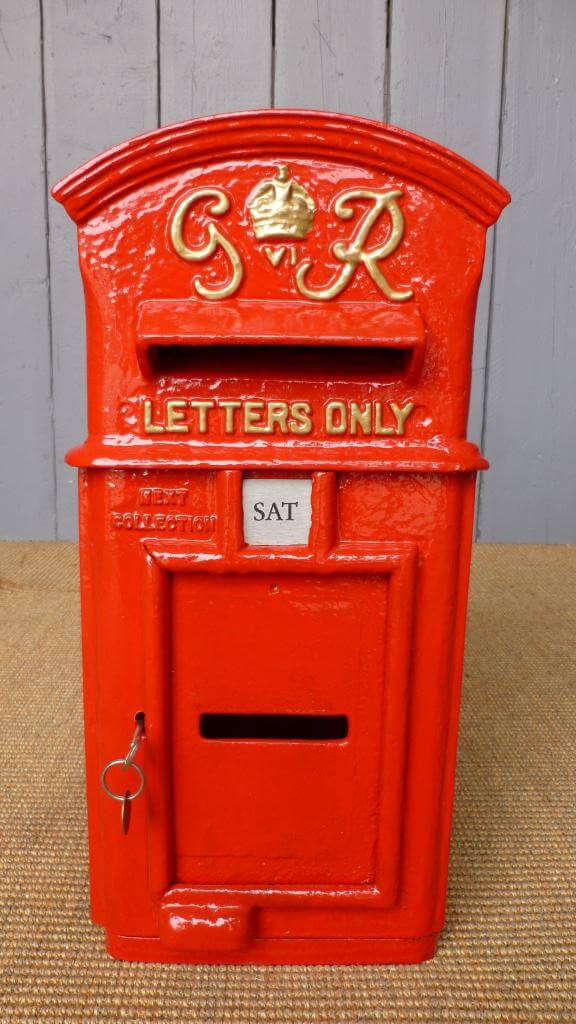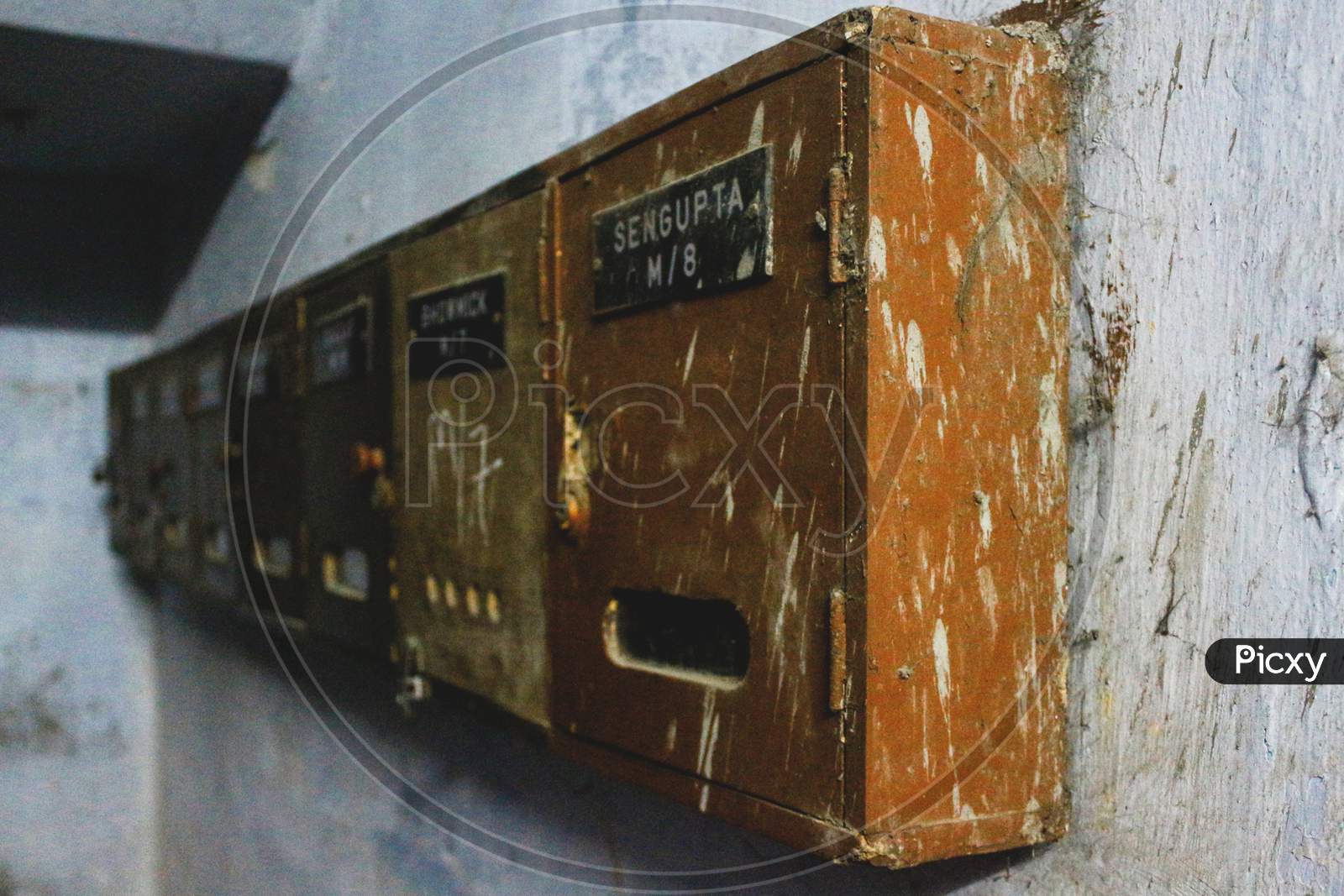Old Letter Boxes
Paul's Unofficial Letterbox Pages: History of British Letter Boxes - Part 1
- As an antique padlock collector, I enjoy the challenge of making missing keys for locks such as the ones in my video. I take this hobby to the.
- Small lamp-post boxes were first introduced in 1896 for use in London squares and later in other areas, particularly rural locations. By 1860 over 2,000 roadside letter boxes had been set up in all parts of the United Kingdom; by the end of the century there were over 33,500, with many more found throughout the British Empire. Notable Manufacturers.
Victorian Letter Boxes
The letter box is a unique and original KBT design available in many colours. The upper part can be flipped open making it an exciting and popular product. A post box (British English; also written postbox; also known as pillar box), also known as a collection box, mailbox, letter box or drop box (American English) is a physical box into which members of the public can deposit outgoing mail intended for collection by the agents of a country's postal service.
Old Printer Letter Boxes

Most houses in Britain have a letter box in the front door, usually a simple slot with a flap over it, through which the post is delivered each morning. The Post Office first encouraged people to provide these in 1849. Similar letter boxes were provided at post offices for people sending letters. One such letter box which was originally in the wall of the Wakefield Post Office has the date 1809 on it and is probably the oldest British letter box still in existence.
Old Letter Boxes For Sale
In 1840 Rowland Hill suggested the idea of roadside letter boxes for Britain. Letter boxes of this kind were already being used in countries such as France, Belgium and Germany. However there were no roadside letter boxes in the British Isles until 1852, when the first pillar boxes were erected at St Hellier in Jersey at the recommendation of Anthony Trollope, who was working as a Surveyor's Clerk for the Post Office.
In 1853 the first pillar box on the British mainland was erected at Botchergate, Carlise. A similar box from the same year still stands at Barnes Cross, Bishop's Caundle in Dorset. It is the oldest pillar box still in use on the mainland. Most of the early boxes were similar in design to the Channel Island boxes, but there were some interesting variations.
Figure 1.
| Figure 2.
| Figure 3.
|
Only photos and a few odd parts remain of London's first pillar box which was at the corner of Fleet Street and Farringdon Street.
Figure 4. |
In 1856 Richard Redgrave of the Department of Science and Art designed an ornate pillar box for use in London and other large cities. An example of one of these boxes, which would have been painted bronze, is now at the Victoria and Albert Museum. A less ornate version was used in other towns and cities. In 1859 the design was improved by moving the aperture from the top to below the rim and this became the first National Standard pillar box. The one exception to this standard is the Liverpool Special of 1863.

Green was adopted as the standard colour for the early Victorian boxes. Between 1866 and 1879 the hexagonal Penfold became the standard design for pillar boxes and it was during this period that red was first adopted as the standard colour. The first boxes to be painted red were in London in July 1874, although it took 10 years before nearly all the boxes had been repainted.
Figure 5.
| Figure 6.
| Figure 7.
|
In 1879 came the cylindrical design of pillar box, which apart from a few recent experiments has changed very little since. The early boxes had no royal cipher and are known as 'anonymous' boxes. This oversight was corrected from 1887 when the words POST OFFICE were also placed either side of the aperture.
The cylindrical boxes came in two sizes, 'A' (larger) and 'B' (smaller). The oval type 'C' boxes with separate apertures for town and country first appeared in London in 1899. Lamp boxes, for use in areas where the amount of post is small, first started to be used generally from around 1897. Although designed to be attached to a lamp post they may also be found attached to telegraph poles, their own post or even set in a wall. The first proper roadside wall boxes had been in use from about 1857. Ludlow boxes, named after the Birmingham manufacturer James Ludlow, were made for use at sub-post offices between 1885 and 1965. Manufactured from sheet metal and wood with distinctive enamel plates they were more prone to rot than cast iron boxes.
Figure 8.
| Figure 9.
| Figure 10.
| Figure 11.
|
Copyright © Paul Wicks 2002
Англо-русский толковый словарь терминов и сокращений по ВТ, Интернету и программированию. . 1998-2007.


Смотреть что такое 'letterboxing' в других словарях:
Letterboxing — is an outdoor hobby that combines elements of orienteering, art and puzzle solving. Letterboxers hide small, weatherproof boxes in publicly accessible places (like parks) and distribute clues to finding the box in printed catalogs, on one of… … Wikipedia
Letterboxing — ist eine Freizeitbeschäftigung, bei der es darum geht, mit Hilfe von Hinweisen, Karte und Kompass einen im Gelände versteckten Behälter zu finden. Es ist so etwas wie der Vorläufer des Geocaching, kann jedoch auf eine viel ältere Tradition… … Deutsch Wikipedia
letterboxing — (or letterboxed) the technique of shrinking the film image just enough so that its entire width appears on TV screen, with black areas above and below the image; refers to the way that videos emulate the widescreen format on television screens; … Glossary of cinematic terms
letterboxing — noun see letterboxed … New Collegiate Dictionary
letterboxing — let|ter|box|ing [ˈletəˌbɔksıŋ US terˌba:ks ] n [U] when a film from the cinema is broadcast on television with black bands at the top and bottom of the television screen so that the film will have the same ↑dimensions as it did on a cinema screen … Dictionary of contemporary English
letterboxing — v. (Video) display in letterbox format, display only across the center of a screen with black bands at the top and bottom (so the wider film format will fit the different dimensions of a TV screen);(British) mailbox, mail slot n. video playback… … English contemporary dictionary
letterboxing — lettˈerboxing noun • • • Main Entry: ↑letter … Useful english dictionary
Letterbox — For the mail (post) receptacle, see letter box. For the outdoor treasure hunt hobby, see letterboxing. A 2.35:1 widescreen image letterboxed in a 1.33:1 screen Letterboxing is the practice of transferring film shot in a widescreen aspect ratio to … Wikipedia
GPS-Hunting — Ein Geocache Behälter Geocaching (von griechisch γη, geo „Erde“ und englisch cache „geheimes Lager“ (gesprochen: [ dʒiːoʊ̯kæʃɪŋ], in Deutschland zumeist [ geːokɛʃɪŋ])), auch GPS Schnitzeljagd, ist eine Art elektronische Schatzsuche oder… … Deutsch Wikipedia
GPS-Schnitzeljagd — Ein Geocache Behälter Geocaching (von griechisch γη, geo „Erde“ und englisch cache „geheimes Lager“ (gesprochen: [ dʒiːoʊ̯kæʃɪŋ], in Deutschland zumeist [ geːokɛʃɪŋ])), auch GPS Schnitzeljagd, ist eine Art elektronische Schatzsuche oder… … Deutsch Wikipedia
GPS Stash Hunting — Ein Geocache Behälter Geocaching (von griechisch γη, geo „Erde“ und englisch cache „geheimes Lager“ (gesprochen: [ dʒiːoʊ̯kæʃɪŋ], in Deutschland zumeist [ geːokɛʃɪŋ])), auch GPS Schnitzeljagd, ist eine Art elektronische Schatzsuche oder… … Deutsch Wikipedia
